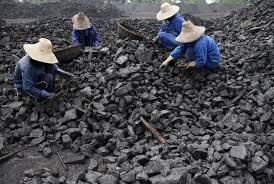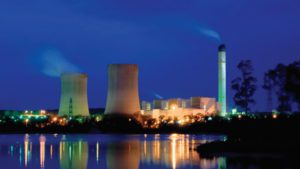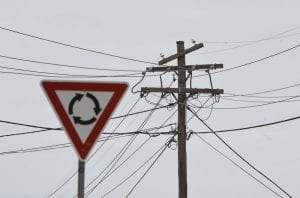China’s largest coal producer, Shenhua Energy Company, has warned of 10 per cent decline in domestic coal sales in the coming year, offering further evidence that the world’s second-largest consumer of coal has reached its peak.
The prediction – which follows China’s 2.9 per cent reduction in coal consumption in 2014, its record investment of $89.5 billion in renewables, and the government’s 2014 announcement that it would peak its carbon emissions by 2030 – was part of Shenhua’s 2014/15 results and business targets announcement on Sunday.
The company says it estimates this year will see a 10 per cent or 47Mt reduction to 404Mt in its domestic coal sales in 2015. Capex plans for coal and power in 2015 are down 25 per cent on 2014 levels to $US3.2 billion, while Shenhua’s investment in ports and rail are forecast to be down 12 per cent year-on-year to $US2.5 billion.
And while Shenhua is due to hold a briefing with analysts later on Monday, some, like the Institute for Energy Economics and Financial Analysis (IEEFA), say the news should send shockwaves through the global coal markets.
“As the top producer in China with a 15 per cent market share, Shenhua is a key barometer for the Chinese coal market,” said IEEFA’s Tim Buckley – director of energy finance studies, Australasia. 
“This plan to reduce volumes a further 10 per cent in 2015 sends an unmistakable signal that China is intent on cutting the emissions intensity of its energy mix by a rapid diversification away from coal.
“While proponents of the view that coal is only in a cyclical downturn argue the 2.9 per cent reduction in China’s coal consumption in 2014 was an anomaly, Shenhua’s own forecast provides more evidence that China has passed peak coal.”
World Resources Institute global director, Jennifer Morgan, said the prediction provided yet another positive sign that China was shifting to a low-carbon economy and would meet its 2030 climate goals.
“The Shenhua announcement is consistent with projections showing that coal use in China could peak by 2020 and decline thereafter with the low-carbon policies the country has put in place,” she said.
According to Buckley, Shenhua’s average coal price received in 2014 dropped almost 10 per cent year on year, with total coal volumes (own production and traded volumes combined) dropping 12.4 per cent to 451Mt, and the decline accelerating rapidly in the year’s last quarter.
Nevertheless, Shenhua appears to remain financially robust with only limited financial leverage, a position which Buckley credits to the company’s realistic outlook.
“Shenhua is a rare example of a coal company with a healthy balance sheet,” said Buckley. “The drop in production and sales is simply a result of it falling in line with Premier Li Keqiang’s recently announced plans to cut the country’s energy intensity by another 3.1 per cent in 2015 … and to cap coal use to below 65 per cent of total primary energy consumption by 2017.”
Without doubt, Buckey added, the greatest impact of China’s hastening shift to cleaner energy would be felt by the seaborne thermal coal sector – and those economies, like Australia’s, that are wedded to the business of digging up and exporting coal.
“The message to investors is plain: this is a sector in structural decline,” said Buckley.
And China’s own senior climate and energy advisor from the Natural Resources Defense Council agrees.
“The most recent forecasts from Shenhua signal that coal production in China has entered its winter. As the largest coal-producing company in China and the second largest in the world, Shenhua’s projection of domestic coal sales reductions can serve as a weather vane for the industry.
“The high production era has ended. China’s coal production and consumption is expected to enter a plateau for the next few years and ultimately go downward with the continued development and improvement of energy efficiency, clean energy and renewables,” he said.
Shenuhua’s 2015 forecast is undoubtedly further bad news for the already much maligned coal mining and export projects planned for the Gaililee Basin and Abbot Point in Queensland.
The planned projects – including the development of huge mines at the site of the Carmichael coal deposit, and the expansion of the nearby port – have been criticised for their “almost unprecedented level of financial complexity and risk,” due to their huge scale, greenfield nature and foreign ownership.
They are also considered to have environmentally disastrous implications, not least of all for the devastating impacts Abbot Point port development proposals will have on the Great Barrier Reef World Heritage Area.
Indeed, the Australian Coral Reef Society – a group comprising Australia’s top coral reef scientists – released a report on Monday outlining the damage the projects will do to the reef, ahead of the June meeting of the World Heritage Committee, which will decide if the Reef should be listed as a World Heritage Site ‘in danger’.
“What our report shows is that regardless of where dredge spoil is dumped, the Abbot Point project will cause significant harm to our Reef,” said Selina Ward, one of the report’s authors and biology lecturer at The University of Queensland.
“Coal dust is already at high levels in the sea around Abbot Point and these levels will increase greatly if the development goes ahead.
“Dredging will destroy surrounding seagrass and may smother corals and harm other creatures like turtles and dugongs. Recent evidence has shown a doubling of the incidence of coral disease close to dredged areas. There are only three percent of the number of dugongs living on the reef that there were in 1960.
“Port expansion would also see hundreds of massive coal ships moving through the Reef each year, with all the risks they bring with them of collisions, pollution, and introduction of exotic species,” Dr Ward said.








